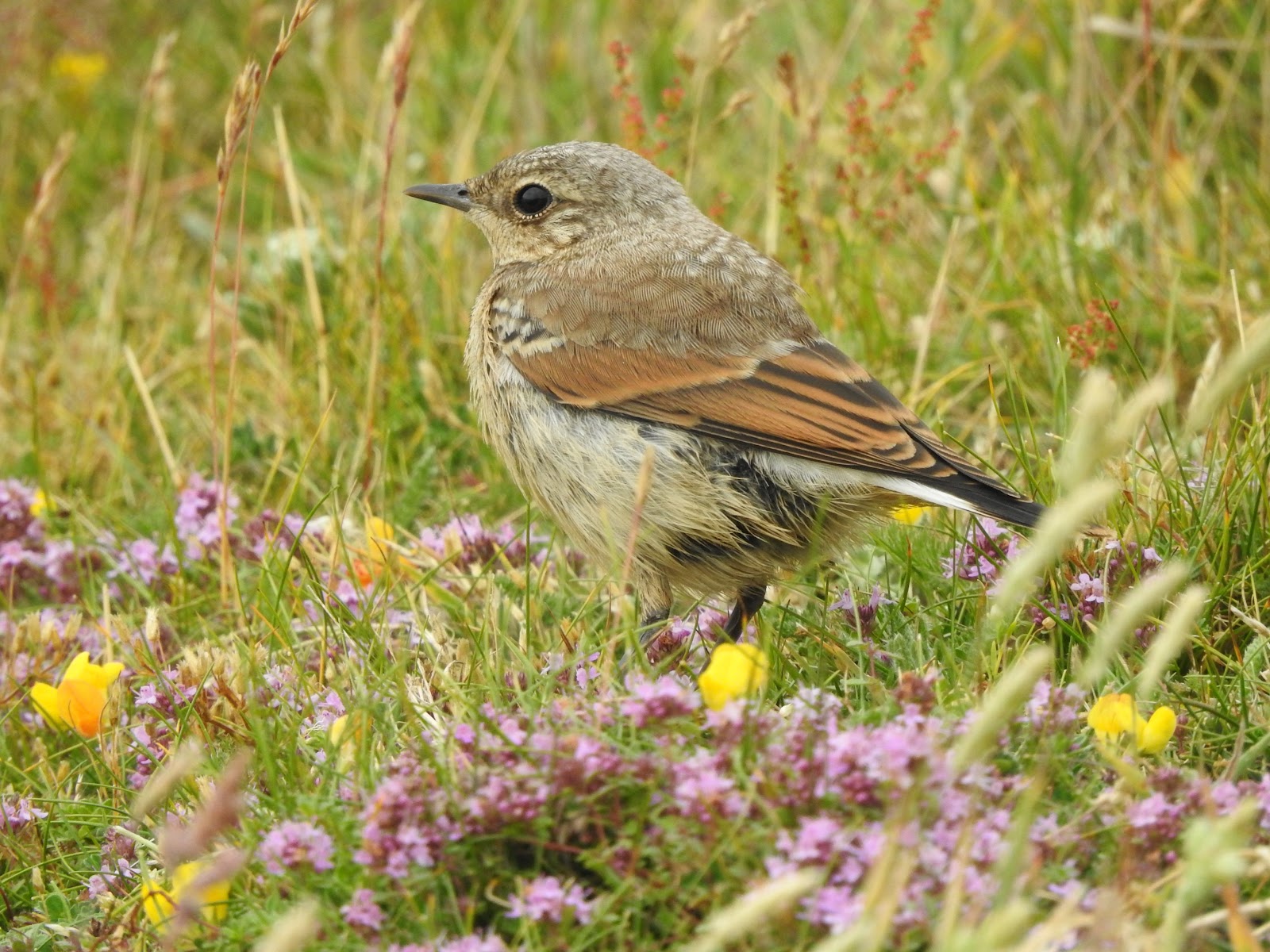Right, here goes another long overdue update. There are never enough hours in the day - despite aiming for daily updates at the beginning of my post, unfortunately my intentions did not last long! After some time taken to focus on my health, more regular updates will now resume.
So without further ado, here are some of the notable records to grace this magical island over the past few weeks. Cormorant have been evident with a max count of 4 on 27 June. Grey Heron were logged on 19 June and 6-12 July involving two different juveniles. A highly unusual record of a singing Tree Pipit in Millcombe on 21 June was remarkable, with the valley also featuring a Cuckoo between 29 June and 4 July. A single Turtle Dove was logged on 28 June and 1 July, feeding in village briefly and later seen around Brambles. A Curlew flew south past North Light on 22 June and autumn wader passage kicked off with a Common Redshank at Pondsbury on 10 July. The site since pulled in a Green Sandpiper on 25 July and Common Snipe on 26 July. Common Sandpiper are grossly under recorded but individuals have been seen at Brazen Ward on 21 July (2), North Light on 24 July (1) and Battery Point 26 July (1). A European Golden Plover occupied the Airfield between 23 and 27 July while Aztec Bay featured a Mediterranean Gull on 24 July.
Seawatching has provided some excitement at times. There was a big Manx Shearwater movement along the Bristol Channel in early July and an hour's stint along the south east and west of the island involved 13,360 individuals on 3 July! The end of the month enjoyed outrageous numbers of Cory's Shearwater along southern Ireland and south-west England. Lundy joined in on the action on 31 July when only the second island record powered passed Dead Cow Point at 8:34PM. Elsewhere, 2 Common Scoter moved south along Jenny's Cove on 11th July. With the exception of our Fulmars and a few late Kittiwake, our breeding birds have largely left after a successful breeding season. The last lingering Puffins can be seen offshore with a bit of luck, but these will be the last sightings now until next spring.
Coupled with an all island Storm Petrel census to get a handle on the currently unknown population size, we've increased our efforts ringing 'stormies' at known sites and are blown away with the success rate. For context, up until the end of 2022 our 10-year average catch rate had been 23 new birds a year. This season (so far) our ringing totals sit at 400(!) new birds ringed, 36 previous year retraps and 32 controls, 4 of which have been caught on Lundy in previous years. These staggering numbers are raising more questions than answers at the moment, but it's certainly a great indicator that these secretive seabirds are doing far better initially thought.
Passerine migration is starting to move through the gears with the first Willow Warbler of the autumn arriving on 19 July. Small numbers continue to push through and a mini fall on 25 July involved 43 Willow Warbler and a Spotted Flycatcher. Millcombe has enjoyed a Grasshopper Warbler on 17 July, Garden Warbler and 6 Sedge Warbler on 1 August. The Goldcrest pair fledged 3 young in Millcombe Pines on 14 July and a mobile juvenile Great Spotted Woodpecker flitted along the Terraces and Millcombe between 12-16 July. The Millcombe Rosefinch was last recorded on 18 June.
Water Rail breeding was confirmed at Pondsbury with young heard calling in early hours of 19 June and again on 27 July. Max counts of the more regular species include 41 Swift moving south on 24 June, 5 Sand Martin on 12 July, 10 House Martin on 17 July and 36 Swallow on 27 July. Juvenile Starling are now out in force with a max count of 174 logged on 24 June and the Lundy House Sparrow population has doubled - the new recruitment of this years young has seen the population rise to 42 individuals. Post-breeding Linnet flocks are also starting to form again with 200 regularly being recorded around Old Light and the Airfield since mid-July.





No comments:
Post a Comment